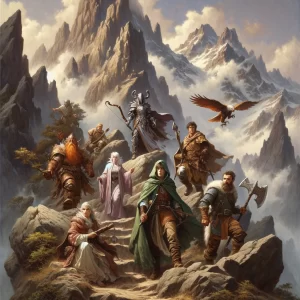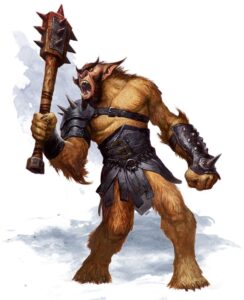
It appears to be a basic law of mining that once someone finds metal, the government will certainly interfere. In Agricola's Germany, each miner was required to register his mine with the local burgomaster or town mayor, so he could divide the ground above the mine into meers. Whoever possessed a meer owned all ore found beneath it. Meers were of different sizes, and the mine's discoverer always received the largest one. Smaller portions belonged to business partners and landowners. The law reserved other meers for the king, his consort, his master of horses, his cupbearer, his groom of the chamber, the bishop, and the burgomaster himself. The local baron did not automatically receive a meer. Miners were legally vassals of the crown and paid tribute directly to the king.
Metal brings wealth, technology, and independence in war, so most rulers want their people to mine. Some kings granted prospectors permission to dig wherever they found ore, no matter who owned the land above it. Other kings allowed miners to seize only fiwastrel landfl that was not being farmed. These laws usually included another provision requiring miners to work their mines. If a mine owner failed to produce ore for nine weeks, the baron often confiscated his holding and awarded it to the informer.
Medieval laws also covered labor in the mines. Shifts could not exceed seven hours, and foremen had to warn workers when their time ended. Bosses communicated with subordinates in deep tunnels by ringing a great bell called a campana, by stamping rhythmically on mine timbers, or by relaying codes of hammer taps from miner to miner. If miners missed these messages, their shifts were still legally over when their lamps burned out. For this reason, foremen filled the miners' lamps and weighed them to be sure that nobody had too little. Most burgomasters refused to allow foremen to work their miners at night or for two shifts in a row, except during emergencies. The miners usually resented these rules, since they wanted two shifts worth of pay.
As a side note, many miners fell asleep in lonely tunnels even during a single shift. Miners sang to stay awake, and Agricola noted that the singing "is not wholly untrained or unpleasing." Dwarves, gnomes, humans, and other races that are not accustomed to eternal existence underground might do the same; the dwarves in J. R. R. Tolkien's The Hobbit sang - and quite well, too.
Ingenious machinery filled medieval mines. Agricola considered the idea of carrying ore out on workers backs barbaric because mine carts had replaced porters for centuries. Carts were rolled into a mine on tracks using the force of gravity, then pulled out by mules or pack dogs. (In D&D game terms, pack dogs are treated as war dogs and carry 20 lbs. at normal speed or 50 lbs. at half speed.) Outside the mine, daredevil sledge drivers guided loads of ore down mountainsides, steering themselves with poles. Agricola mentioned that these sledders worked
"not without risk of life." Other loads were lifted out of vertical mine shafts by cables. Hand-powered windlasses and cranes operated by treadmills dotted the ground above mines. Miners did not even have to climb down the shafts to work. They slid on chutes or clung to rope elevators powered by treadmills.
Some mines flooded constantly, so organlike pump arrays descended into the tunnels, powered by treadmills or water wheels in nearby streams. Some pumps used a single plunger, while others in-volved dragging a chain with bundles of watertight leather set at given intervals through a pipe. Pumps become inefficient when the distance they travel is too long, so deep mines used other systems. Some dragged chains with buckets attached through the water. Others required pump relays, each one raising water one level using buckets or Archimedes' screws. Relayed pumps could use relayed water wheels, in which water poured down a deep shaft and turned a different engine on each floor.
Nothing could be more important than oxygen to miners of any race. Medieval engineers dug horizontal shafts into mountainsides so air could flow freely into some mines, but many lodes were too deep to be reached in that manner. In windy spots, miners used funnels and pipes on the surface to ventilate tunnels. These devices had fans that rotated in the wind using vanes and sails. Deeper tunnels required miners to invent various air pumps, including men fanning air into shafts with linen sheets, feathered propellers, vast blower boxes powered by water wheels, and gigantic bellows. Gearboxes allowed these air pumps to be powered by treadmills or water wheels as well as by hand.
When these devices break (or are sabo-taged) in game campaigns, characters might be trapped without fresh air. A 10' cube could contain enough oxygen to last one man for one day. If the character exerts himself by exploring, fighting, or digging, he needs twice as much oxygen.
Fires also consume oxygen. A torch consumes a 10' cube of oxygen in eight hours, and a small bonfire uses this much in two hours. Burning oil uses 10 times as much oxygen as a wood fire, so an oil-burning fire uses up a 10' cube's oxygen in only 12 rounds. An adventurer can hold his breath for a number of rounds equal to one-third his constitution, rounded up. After this, the character must attempt a 1d20 roll against his constitution each round, with a penalty of 2 per round. When this roll fails, the victim suffocates.






